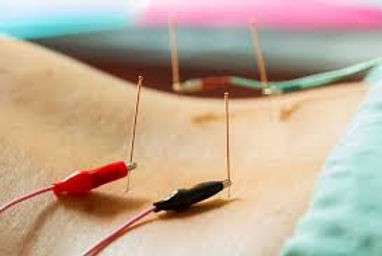Providing Physical Therapy to Estevan and surrounding area
Acupuncture
The core principle underlying acupuncture's health restoration.
Musculoskeletal acupuncture is a branch of Traditional Chinese Medicine (TCM) that focuses on treating disorders of the musculoskeletal system, including muscles, bones, joints, and connective tissues. Dating back thousands of years, acupuncture has evolved into a sophisticated therapeutic modality, gaining recognition and acceptance worldwide for its efficacy in managing various musculoskeletal conditions.
At the core of musculoskeletal acupuncture lies the concept of Qi (pronounced "chee"), the vital energy that flows through meridians or pathways in the body. According to TCM theory, disruptions or imbalances in the flow of Qi can lead to pain, dysfunction, and disease. Acupuncture aims to restore harmony and balance by stimulating specific points along the meridians, promoting the smooth flow of Qi and encouraging the body's innate healing mechanisms.
Key methods utilized in acupuncture therapy
Musculoskeletal acupuncture employs various techniques to address a range of conditions. These may include:
Traditional acupuncture needles: Fine, sterile needles are inserted into specific acupuncture points to alleviate pain, reduce inflammation, and improve range of motion.
Trigger point acupuncture: Targets hyperirritable spots within tight bands of muscle, known as trigger points, to release tension and alleviate pain.
Electroacupuncture: Involves the application of a mild electrical current to acupuncture needles, enhancing the therapeutic effects by stimulating nerve pathways and promoting circulation.
Musculoskeletal acupuncture has demonstrated efficacy in managing various conditions, including:
Back pain: Reducing muscle tension, improving circulation, and stimulating the release of endorphins, the body's natural painkillers.
Arthritis: Help alleviate pain and stiffness associated with osteoarthritis and rheumatoid arthritis by reducing inflammation, improving joint function, and enhancing mobility.
Sports injuries: Aid in the recovery from sports-related injuries such as sprains, strains, and tendonitis by promoting tissue healing, reducing swelling, and relieving pain.
Fibromyalgia: May offer relief from the widespread pain, fatigue, and tender points associated with fibromyalgia by modulating the central nervous system and promoting relaxation.
What role does acupuncture play?
Musculoskeletal acupuncture offers a holistic approach to managing musculoskeletal disorders, addressing the symptoms and underlying imbalances within the body. By harnessing the body's innate healing mechanisms, acupuncture provides a safe, effective, and drug-free alternative for pain relief and improved musculoskeletal health. Whether used as a standalone therapy or as part of a comprehensive treatment plan, musculoskeletal acupuncture holds promise for enhancing physical well-being and restoring optimal function.



